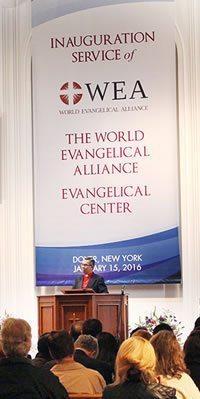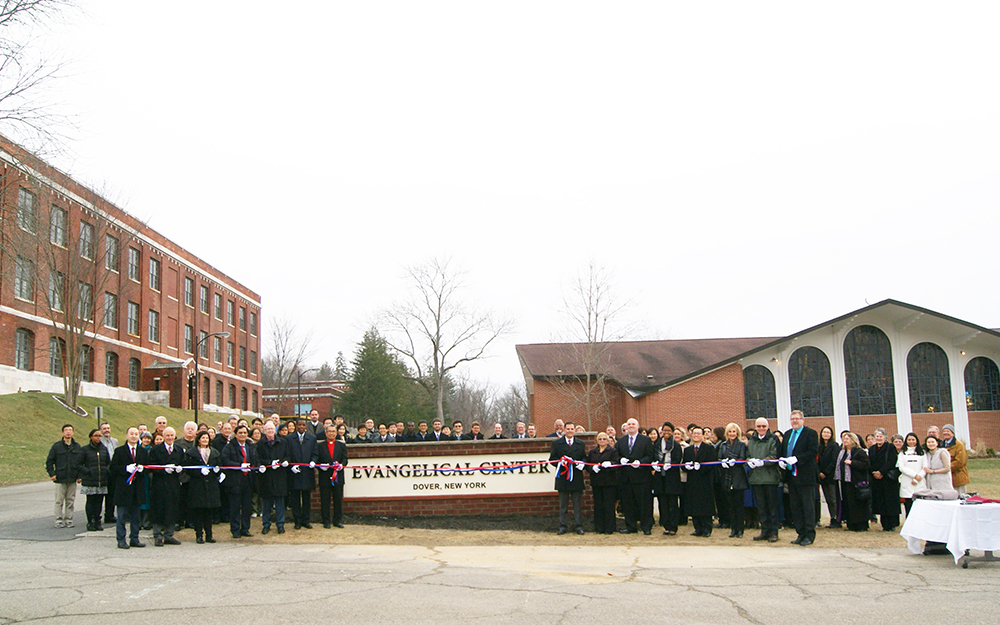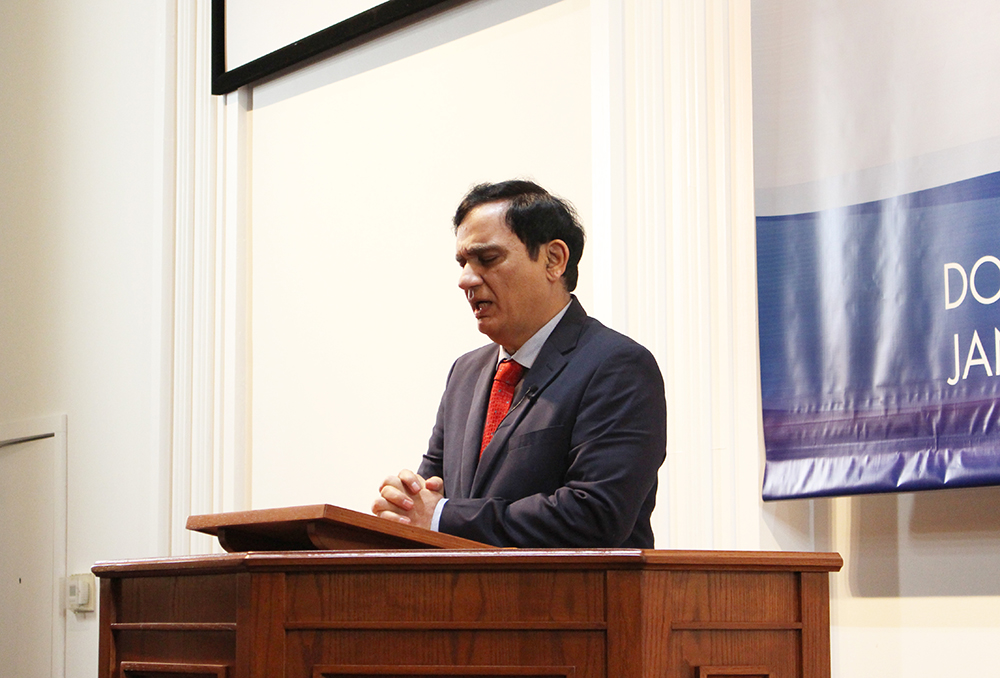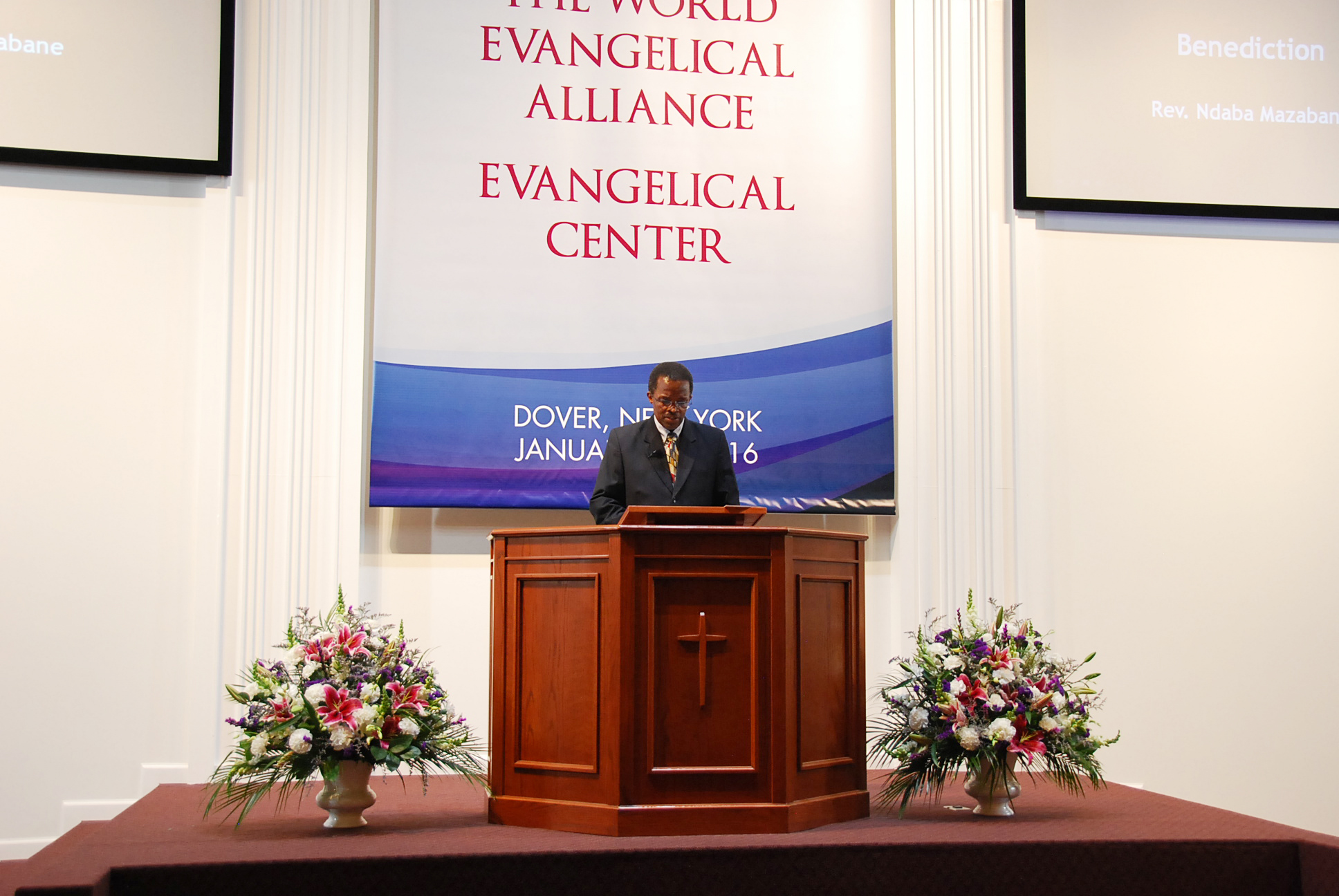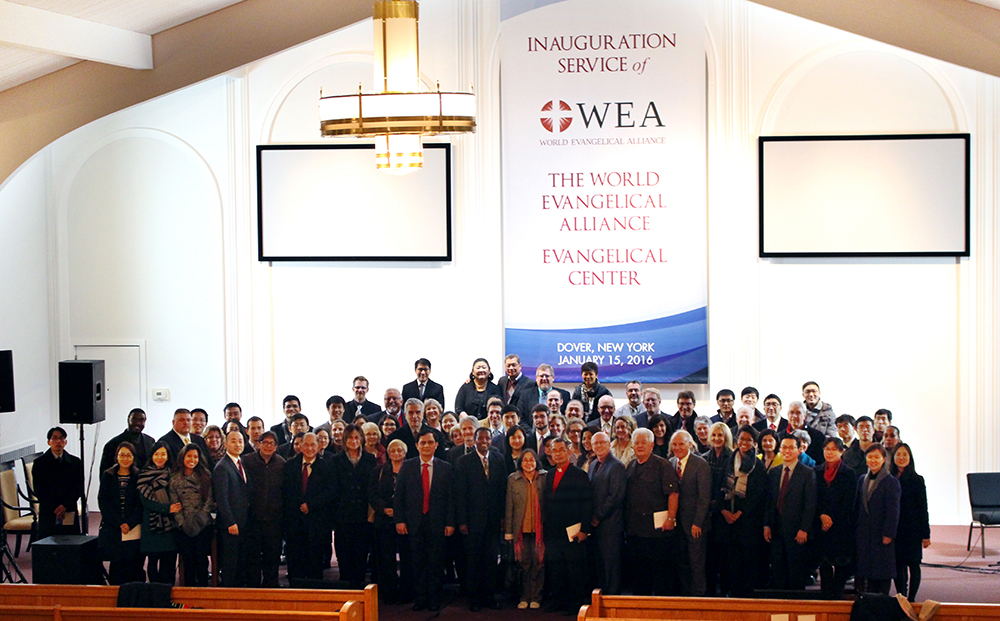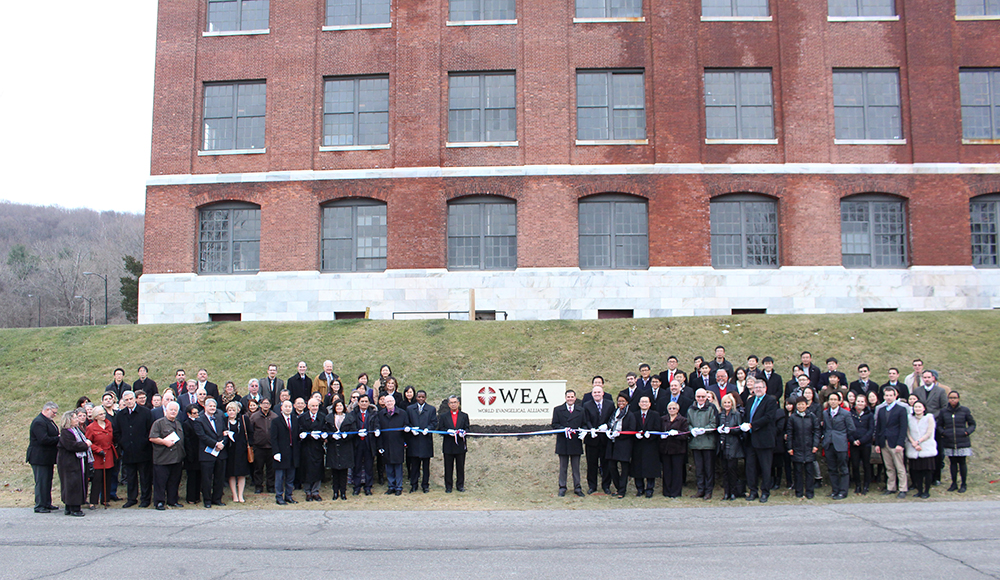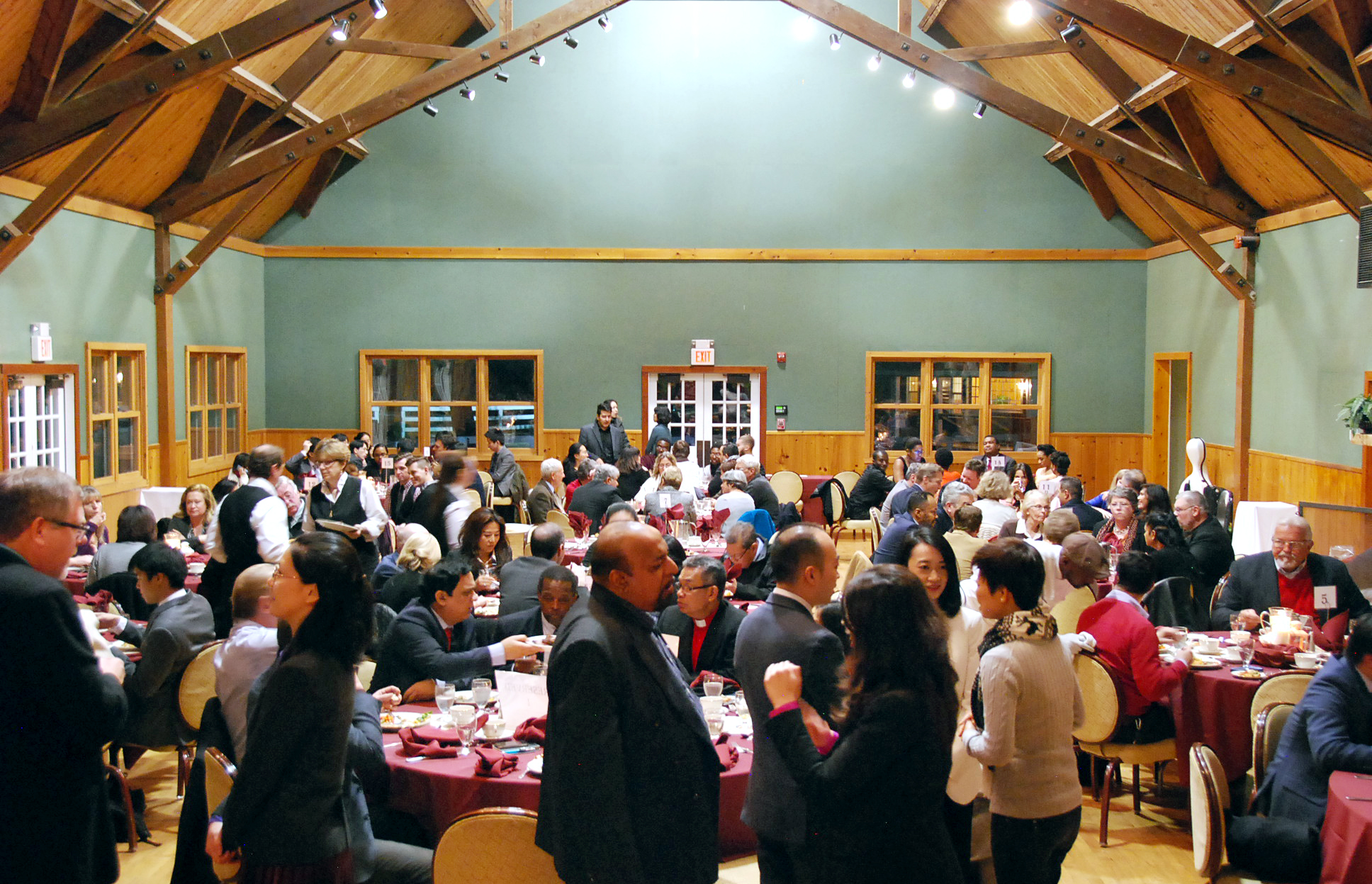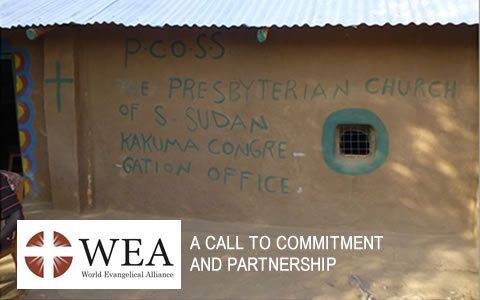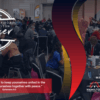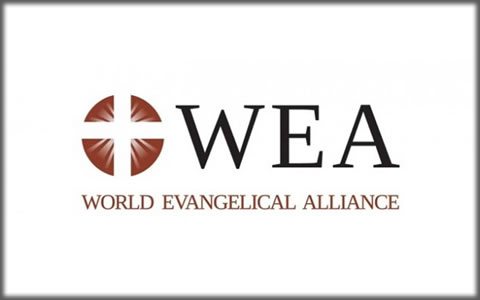
ISIS – COMPOSITE
This is an important article on ISIS and Islam re-posted from the World Evangelical Alliance (the global body which NZ Christian Network is the NZ member of).
Particularly important in the opening paragraphs is the statement:
“To say ISIS is not Islamic is disingenuous. But to tar all of Islam, and therefore Muslims, with this brush is like saying that Northern Ireland’s Protestant/Roman Catholic war represents all Christians or that Buddhist conflict in Sri Lanka or Myanmar is a sample of all Buddhists”
We recently posted an article on a similar theme called ‘A Letter to the Church about Islam and ISIS‘.
Re-posted from WEA – January 7, 2016.


ISIS
WHAT IS IT?
WHERE DID IT COME FROM?
WHAT IS ITS INTENT?
WHAT IS OUR RESPONSE?
ISIS Part I
What it is
ISIS (Daesh)* is a flowering thorn attached to a stem and rooted in a life-sustaining soil. ISIS is the bloom; an extremist messianic Wahhabism (Salafism) is the stem; a longing to return to radical Islamic tradition, to expel Western influence from the Middle East, and to launch global Islamic rule is its soil. To mix metaphors: “Daesh [ISIS] has a mother: the invasion of Iraq. But it also has a father: Saudi Arabia and its religious-industrial complex.”**
To say ISIS is not Islamic is disingenuous. But to tar all of Islam, and therefore Muslims, with this brush is like saying that Northern Ireland’s Protestant/Roman Catholic war represents all Christians or that Buddhist conflict in Sri Lanka or Myanmar is a sample of all Buddhists.
However, what is not understood is that ISIS’ roots reach back to the mid 1700s, from which emerged al-Qaeda in Afghanistan in the late 1980s and ISIS in Iraq in 2006. Today we live with news of violence on a grand scale and are horrified by its rise to global prominence. ISIS is both notorious and mystifying. Most Muslims too are scandalized by this vicious and bloodthirsty mob, bewildered by its expansion, and unsure of its future.
ISIS’ religious beginning
Startled by its rapid rise in early 2014, yet ISIS is really a more virulent manifestation of an Islamic movement from the mid1700s which was inspired by an Islamic cleric, Wahhab (Muhammad ibn ‘Abd-al Wahhab, 1703-1792). Scandalized by what he saw as loose living and superstition, he believed Muslims should strictly observe Islamic rituals and follow a literal interpretation of the Quran. Under the Ikhwan, a tribal militia group, Wahhab’s influence rose in central Saudi Arabia. In 1744 Wahhab engaged with tribal leader Muhammad ibn Saud (his successors today are called the House of Saud), and over the next 150 years its influence fluctuated in the Arab Peninsula. While Wahhab taught that only by education and debate could Islam advance, Ibn Saud saw it otherwise, advancing faith by decapitating tens of thousands to build his political power base. After WWI the Saudi chief Abd-al Aziz consolidated his power with Wahhabist theology, creating in 1932 what today is Saudi Arabia.
The role of Saudi Arabia and Sunni Wahhabi fundamentalism surfaced in 1973 as the exploding price of oil gave Saudi Arabia money, influence and power. While Saudi Arabia’s prime export is oil, what is less known is its export of radical Islam. The Muslim World League opened offices where Muslims lived, funding the building of mosques, printing educational curriculum, and sending out Wahhabi preachers. As scholar Karen Armstrong notes, all the while they demanded “religious conformity in return for their munificence, so Wahhabi rejection of all other forms of Islam as well as other faiths would reach as deeply into Bradford, England and Buffalo, New York as into Pakistan, Jordan or Syria: everywhere gravely undermining Islam’s traditional pluralism.” (Author of Fields of Blood: Religion and the History of Violence)
Today the Saudi kingdom downplays radical Sunni Islam, although it accepts takfir in which a Muslim, such as a Shiite can be declared an unbeliever. This allows them then to kill other Muslims and enforce strict religious laws including cutting off hands of thieves, beheading criminals and stoning to death women accused of adultery. In the 1980s, encouraged by Saudi princes, many went to Afghanistan to expel the Soviets, and in the 1990s to Bosnia and Chechnya to support Muslims.
From that world Osama bin Laden rose to prominence, driven by a passion to rescue his Muslim community humiliated by infidels. Incensed that the US military was present in his homeland, in 1989 al-Qaeda was created which in time morphed into ISIS (2006).
The long history of strict, sectarian Islamic doctrine found its beginnings in the Bedouin tribal militias of Ikhwan, inspired 270 years ago and played out in Paris, November 2015: one of the suicide bombers was, as reported, radicalized in a Wahhabi mosque in Chartres, France
Division within Islam
Befuddling to non-Muslims is the major historical division within Islam. The majority of Sunni, who make up 87 percent of Muslims worldwide, are located mostly in Saudi Arabia, Egypt, Iraq, Pakistan, Turkey, Indonesia and most North African countries. The other 13 percent is Shia, its majority residing in Iran, as a majority in Iraq and a minority in India. Altogether there are 1.6 billion Muslims in the world.
In the hotbed of the Middle East these two factions often view each other as infidels, as they regard Christians or Jews. Their deep and hostile division was born from a dispute over succession after Mohammed died in 632 AD. This major fault line is partly political: Shia, or “followers of Ali,” link themselves with Mohamed’s son in-law, Ali ibn Abi Talib. The Sunni, or “people of tradition,” believe that selection is best made from the most qualified.
Next door to the Sunni majority of the Middle East is Iran, ethnically Persian and the global center of Shia. Next door to them is Saudi Arabia, both Arabic and Sunni and holder of the holy site of Mecca. Most Muslims in the Middle East – apart from Iran, Turkey and the Kurdistan province of Iraq – are Arabs. All this tinderbox needs is a spark: Saudi Arabians are both Sunni and Arab; Iranians are Shia and Persian. Arabs and Persians are hostile neighbors – one Persian and Shia, the other Arab and Sunni – contentious and fighting each other by way of proxy battles in Syria.
Antagonisms of the region are both contemporary and historic in people bred in the art of making fine their Islamic distinctions. Theirs is a region of world sites etched with memory of strong and vibrant Jewish and Christian communities, now nearly obliterated or vacated. Their political sensitivities have been grieved by foreign geographic rejigging of territory, as the West carved up its borders with the scratch of a pen.
We are witnessing a settling of historic grievances. (Recall a million military and civilians were killed in the Iran-Iraq war of the 1980s.) In more recent days we see the unsettling of peoples by the 2003 invasion; after the invaders popped the corks of fizzing cultures, we watched as they blew apart.
ISIS PART II
Four central questions
ISIS is a descendant of 18th Century Islamic revival connected to today’s Saudi Arabian Islamic fundamentalism. Osama bin Laden, a Saudi nurtured in that fundamentalism, birthed al-Qaeda in Afghanistan in the late 1980s. However, al-Qaeda was too moderate for the Sunni minority in Iraq who were brutalized by the Shia majority who assumed power after Saddam Hussein was taken out. In 2006, ISIS declared itself in Iraq. It was the collapse of the Syrian government which opened space in which ISIS could freely roam and claim territory, “returning civilization to a seventh-century legal environment, and ultimately to bringing about the apocalypse.” (G. Wood, The Atlantic).
In the crisscross of Middle East people, movements, doctrines, national egos and tribal instincts, there are four questions at play in the ongoing saga.
I. How are al-Qaeda and ISIS related?
Al-Qaeda
Osama bin Laden, a Sunni from Saudi Arabia, founded al-Qaeda in Afghanistan where he and his colleagues went in the 1980s to oust the Soviet invaders. Al-Qaeda is stateless and operates ideologically much like the Islamic fundamentalist movement Wahhabism — with no seeming interest to control land and run as a state, at least up to now. Its attacks aimed at the West, include the 1998 U.S. embassy bombings in Nairobi, the 9/11 attacks, and the 2002 Bali bombings. Its aims include restoring fundamentalist Islam, eliminating Western influence in Muslim countries and, in time, forming a caliphate. The use of suicide bombers made al-Qaeda a dangerous force beyond the Mid East, as they trained militia and established affiliates. Because bin Laden was its commander and chief architect, his death brought internal changes, and his successor, Ayman al-Zawahiri, seems to lack charisma to fire his forces, as did his predecessor.
- Al-Qaeda views the United States as the prime “apostate” country.
- Christians and Jews are seen as conspiring to destroy Islam.
- The aim is to impose Sharia law in Muslim countries, and expand its influence wherever it can, including sub-Sahara Africa.
- While strict in its view of other religions, including Muslims not in line with its theology, Al-Qaeda has been tolerant with Shia Muslims.
ISIS
ISIS* (or Daesh) is a child of al-Qaeda, created in Iraq by Abu Musab al-Zarqawi, a Jordanian. In 2004 bin Laden funded al-Zarqawi who launched al-Qaeda in Iraqi and in short time “out-violenced” bin Laden. Internal disagreements led al-Zarqawi in 2006 to form ISIS. As Syria was crumbling, the two groups fought over who would represent the jihadist presence there. In time ISIS won. In 2014, its new leader, Abu-Bakr al-Baghdadi (now caliph), declared a caliphate.
- ISIS, also in line with the above first three bullet points describing al-Qaeda, it uses violence to shock, so extreme that even bin Laden called for moderation.
- As al-Qaeda enlisted support of Muslims, ISIS does the opposite, killing and destroying everything in its path.
- ISIS views Muslim countries, those not living up to the standards of Sharia, as enemies.
- They attack Shia in Iraq, the Hezbollah in Syria (who are funded by Shia Iran), Yazidis, Kurds, Christians, and Jews.
- They don’t have the advantage to hide, as does al-Qaeda who can burrow themselves in caves and mountains.
- The prophetic, apocalyptic vision is an important part of the ISIS narrative.
In short, al-Qaeda tries to play it safe with various Muslims, seeking cooperation by doing its killing and enacting its brutality behind closed doors while ISIS does it in the open. This fight for power within Jihadist communities leads to ferocious battles.
II. What is the meaning and importance of a “caliphate?”
By definition it is “succession,” that is, a successor to the rule of Muhammad.
A caliphate is an Islamic form of government led by a caliph – a religious and political leader deemed worthy to lead a land where Islamic law (Sharia) is enforced. On June 29, 2014, after taking large areas of land in Iraq and in the Syrian heartland, Abu-Bakr al-Baghdadi declared a worldwide caliphate. The idea behind a caliphate is that all Muslims are to give obedience to the caliph. A caliph – a religious and political leader without physical blemish – must be from the Quraysh tribe, in the Arabian Peninsula. The last caliphate was under the Ottoman Empire, 1299 to 1924.
III. Why such use of violence, bloodletting and killing?
While al-Qaeda had little compunction in wanton killing of Muslims, Christians, combatants or noncombatants, ISIS raised brutality to new forms. Terrorizing is a deliberately designed strategy. Beheadings, crucifixions, setting people on fire, taking women and girls as sex slaves is so numbing it gets our attention. In 2004, an online book was released: TheManagement of Savagery: The Most Critical Stage Through Which the Umma Will Pass (Umma means the worldwide Muslim community), was a manual for establishing a caliphate, purifying Muslims worldwide, and creating fear by use of violence: not only designed to shock the world, but draw the West into battle.
IV. Does prophecy fit into their narrative?
Muslims, to varying degrees, look forward to the arrival of the Mahdi, a messianic figure who will lead Muslims in their takeover of the world. Called “End of Days,” this event precedes 12 caliphs, beginning with Muhammad. ISIS claims Baghdadi was the eighth. Islamic armies will take on “Rome,” thought to mean Istanbul. It is somewhat similar to the Christian teaching of the battle in Megiddo (Armageddon) in Israel. Ironically they predict that the Mahdi will be helped by Isa (“Jesus” in Islam) to defeat the anti-Christ. ISIS propaganda videos are filled with images and references to End of Days. While al-Qaeda is also apocalyptic, it tends to be less vocal of these scenarios while ISIS uses them to highlight their significance.
The clash between al-Qaeda and ISIS is enormously problematic as each competes for affiliates: al-Qaeda is linked to Jihadist groups in Yemen and Syria, while ISIS has Boko Haram in Nigeria and fighting militia in Syria and Yemen.
The history of the two movements is fluid, zigzagging its way through the Middle East. While we try to help settle four million Syrians, Islamic Jihadists, be they al-Qaeda or ISIS, see this having little consequence. Mayhem and conquest is their goal. Surprising are the number of recruits from 86 countries, attracted by their malicious and virulent videos. Young men or women unmotivated in their own lives, and seeing the possibility of being part of a world-changing movement, latch on to glossy promises, and mesmerized by dreams of ruling in the Last of Days, leave all to follow Jihadism.
ISIS PART III
Six underlying realities; seven stages in conquest
How did a group of religiously fanatical warriors grab hold of world media, shock us with blood-spattered video, shame us with growing fear, and sweep across north central Iraq and Syria, grabbing control, imposing Sharia law and bamboozling tens of thousands of Iraqi troops?
Unprecedented in my experience, ISIS (or IS or ISIL) is like no other military incursion or insurrection in living memory. In Part III we review six underlying realities, then trace seven stages of conquest.
Underlying realities
First: Jihadist doctrine.
The genesis of Jihadism included violence and brutal takeover as part of its earliest formation. The 18th century, Islamic cleric Muhammad ibn ‘Abd-al Wahhab, brought into the Saudi peninsula, rationale for application of primitive laws and regulations: Sharia. The excessive brutality in Iraq following 2003 between Muslim factions seems unbelievable to outsiders. But within their longer history, such conflicts were not uncommon.
Second: Hatred for the West is hyped in the region.
Following the collapse of the Shah of Iran in 1978 and the US expulsion, Persian hatred of the West became normal fare. But in and among Arabs and Afghanis, two recent invasions brought to a white heat their despising of Soviets, Americans and Europeans.
Third: Chaos that engulfed Iraq and Syria.
After the 2003 invasion and hanging of Saddam Hussein, the Iraqi military was dismissed, leaving tens of thousands of angry men without work, status, or income. Sectarian fights broke out. Shia Muslims held down by Hussein, now under President Maliki turned their fury on Sunni Muslims. (Christians from both Iraq and Syria have told me that their lives were protected under Hussein and Assad. When the two lost control, their lives as Christians were put in jeopardy, caught in Muslim sectarian battles.)
The internal conflict in Syria turned the country into a lawless land. So now with no one controlling either Iraq or Syria, ISIS had open range to kill, intimidate, rob and take command.
Fourth: A ready supply of fighting equipment.
The military surge in 2007 poured in billions of dollars. When the U.S. pulled out in 2011 they left behind a huge military cache, and who better to use it than the Sunni already trained with military experience under Hussein. Dismissed by the US coalition and with nowhere to go, when ISIS fired up its plan, they were available and willing. Money was a powerful attraction and they now had a cause.
Fifth: ISIS had a plan.
In 2004 an online manual, The Management of Savagery: The Most Critical Stage Through Which the Umma Will Passwas released. This detailed manual is comprehensive in its scope, including how to set up Islamic rule and defeat Jews and Christians. Its clarity, sophistication, strategic and detailed vision along with a visionary dream could (apart from details) be lifted from a Fortune 500 corporate plan. It’s unknown how much ISIS used this specifically, although its activities to date come close to its replication.
Sixth: Resources.
Their plan is huge and need for money inexhaustible. While al-Qaeda raised funds from donors, ISIS makes money. They had at their disposal huge caches of arms and the best of military equipment that cost them nothing. Then they took over oil fields and banks, making millions a day on the oil market, sucking up the cash reserves of banks, and taxing those in their caliphate – estimated between six and nine million people. Entrepreneurs they are. While destroying historic sites, they saved some of the most precious of ancient treasures, selling them on the black market.
Stages of conquest
What were the stages growing in a few months from an infant organization to a sophisticated operation that the West and Middle East powers seem flummoxed in dealing with?
Stage One – Outsiders
Soviets smashing into Afghanistan in the late 1970s coalesced Muslims in military opposition. The U.S. provided funds and equipment to help those opposed to the Soviet presence, which included Osama bin Laden. After forming al-Qaeda, in time he saw the American base in Saudi Arabia an affront to Islam. Establishing training bases, al-Qaeda prepared for 9/11. The U.S. Coalition subsequent invasion in Afghanistan and then Iraq fueled these hatreds, providing a breeding ground, creating Jihadi hybrids.
Stage Two – Emergence of Islamic organizations
Within those wars and the subsequent Sunni/Shia inter-Islamic fighting, al-Qaeda and ISIS created internally disciplined groups sophisticated in military battle and driven by a ferocious and narrow Islamicism: primitive and disciplined they became killing machines. Al-Qaeda had not been in Iraq, but after the 2003 invasion and the eventual power grab by the Shia Muslims, al-Qaeda needed to protect their Sunni community. Ironically the Coalition forces, in trying to limit the sectarian killings after the 2003 invasion, created Bucca Prison, through which 100,000 passed from 2003-2009. It was a feared place to manage and, inadvertently, became an ideal site for insurgents and jihadists to meet, to formulate plans, to learn from each other, all in preparation for their next stage. When released, many ended up serving ISIS.
Stage Three – ISIS is formed
In 2006 al-Zarqawi formed ISIS in Iraq. He was opposed by bin Laden who by that time was under fire, hiding in the mountains of Pakistan/Afghanistan, leaving al- Zarqawi to do most anything.
Stage Four – The U.S. military withdraws from Iraq
In 2011 the U.S. military withdrew and by so doing gave space and freedom for its Shia majority – with Maliki, president of Iraq (himself a Shia) – to bring pressure on the Sunni minority. In this vacuum the Sunni ISIS built its power base from which it in time moved north and west into major sections of Iraq and Syria. This may have been the most strategic allowance for the fast expansion of ISIS.
Stage Five – The Arab Spring
Beginning in Tunisia and finding its most dynamic force in Egypt, over time civil unrest erupted in Syria. A young boy who demonstrated against Assad was tortured and his mutilated body dumped back at his parents’ home. Fueled by years of dictatorship and control at the hands of Assad and his minority Alawite, the country rebelled. Over 300,000 have been killed and 4 million have fled. Within this chaotic country, the border between Iraq and Syria meant nothing, a border arbitrarily drawn by the French and British after WWI. Syria was ready-made for ISIS, giving them conquerable territory in which to set up their Caliphate.
Stage Six – Proclaiming the Caliphate
After much internal squabbling in Iraq, ISIS as a force for power took off: looting the military equipment the U.S. had left behind, recruiting experienced Iraqi military leaders, drawing in Sunni soldiers by promising them a living wage and successfully wooing many to join. With the shock of horror and bloodletting, in early 2014 they swept across the north central plains of Iraq and into Syria holding in their control millions. In Mosul of 1.8 million, Iraqi soldiers literally dropped their weapons and ran for home. On June 29, 2014, the new leader of ISIS, Abu Bakr al-Baghdadi announced the formation of a Caliphate telling Muslims world-over that a new era had dawned – a recruitment-rallying cry. It’s hard for a non-Muslim to feel the emotional power of such an announcement. A Caliphate is a promise to join in destroying the West, an opportunity to be present in the establishing of a pure Islamic community, and a privilege to enroll with the Islamic prophetic promise of the Last Days’ Apocalypse. This magnetic combination is a call many cannot resist.
Stage Seven – Recruitment
What drives young men or women to invest their lives in such murderous operations? The sophisticated recruiting videos and on-web programs drew 30,000 recruits from 86 countries. These foot soldiers now have a cause for which to live and die. Their angst over how they view the “Christian” West treating Muslims, reached a boiling point.
ISIS PART IV
A Christian response
Has ISIS peaked? Will it soon fall into ruins? Its sudden rise as global terrorist #1 caught us by surprise. As small as it was in its beginning, its capacity to sustain a crescendo of unspeakable violence along with capturing and managing territory and people seem incompatible. The power of the world’s mightiest military machines seemed stuck, its brains and brawn awkward if not ineffective, inconclusive if not unsure, apprehensive if not afraid.
We have messed with local Middle East realities at our risk. Dropping bombs on foreign nations not only doesn’t solve or eliminate problems, it creates more trouble than we ever imagined possible.
ISIS is not a flash in the pan. Out of centuries of theological and social refining, Sharia shaped an expression of Islam that most Muslims buy into. While few support their extreme radicalization, within the Islamic world there seems to be a spiritual and social genetic predisposition to enforce discipline.
Further, the radicalization of this current breed will not end tomorrow. This is generational. The thousands who have slipped over the borders into Syria and Iraq are younger, many non-Islamic (but then converted) and many not Arabs. They have been mesmerized by the charismatic call of the leader to join a new world order, in which the evil and immoral West will be dealt a deathblow.
This charismatic call is not just an appeal to the dispossessed. Those who took part in recent Western killings and bombings were not unemployed but many from the middle class. To assume that ISIS is made up of desperate young men and women, languishing in camps of unemployment, simply doesn’t hold. Those may be places for recruitment of foot soldiers, but those who create mayhem mostly are well educated and employed. So what stirs them into action? Perhaps they feel humiliated by the West; their borders were manipulated after WWI creating new countries, setting up kings and rulers and more recently invaded its countries, possibly producing a shaming effect.
We are witnessing a “perfect” storm. Joining in a single moment are factors reinforcing each other, building synergistically, triggering social movements, employing deep emotions of young people, pumping passion so that self-immolation is considered a joyous calling.
Islamic faith does not divide between the secular and the religious. Division of church and state is fundamental to our governmental formats and authority, and it informs how Western society operates. Not so for Islam. Some countries in which Islam forms a majority (Indonesia) Christians have relative freedom. But in other countries such as Iran, Iraq and Saudi Arabia, Sharia rules.
Muslims are the ones most afflicted and killed by ISIS. The reputation of Islam is in tatters, a nightmare for those wanting to put it forward as a peaceful and modern faith. Islamic scholar Christine Schirrmacher notes, “At the moment Jihadism is certainly one of the biggest threats to world peace. The result of terror and death in the name of Islam is first of all that Muslims themselves are the main victims, because in most countries especially fellow Muslims of the terrorists die due to attacks and executions, as it happened during the years of fighting in Iraq. In addition, the whole Muslim world suffers from terror and jihad because the reputation of Islam as a religion is damaged.”
As professor Schirrmacher notes, Islamic fundamentalism is a huge threat to peace, not limited to the region of its current wars, but globally. As in Paris and San Bernardino, their wildcat strikes continue. The West is just too open and free for terrorists not to take advantage.
Our social/political fixation has been on Iran’s nuclear capability, while oblivious to the radical religious exports of Saudi Arabia. Our presidents and prime ministers openly court Saudi princes, while underneath, these same princes send billions to build mosques, sponsors schools, and foster radical Wahhabism. The naivety of those we elect to the highest offices is appalling in their chosen ignorance and embarrassing in their pretense.
Muslim devotees, linking the West with Christianity ask, “Why would I convert to Christianity and join an immoral community?” I object, arguing many in the West are not Christian, or nominal at best. This they don’t grasp. Watching Hollywood’s latest, they assume those messages are normative to what we Christians believe and how we live.
In some Middle East countries, it is dangerous to be a Christian. Tens of thousands have fled. In Saudi Arabia it is dangerous for a local to confess Christ. For those in North Africa, Boko Horam is murderous and strikes without warning.
How then are we to think? Here are some guidelines for consideration.
Let’s ask, “What might it feel like to be humiliated by a foreign power whose religion I view as wanting to obliterate mine?” It’s helpful to try and understand their fears and concerns, seeing the world through their eyes.
Second, avoid the trap of partisan thinking. Opposite points of view lineup one against the other. We listen and support one side and demagogue the other. Emotionally disengage for a moment. Ask the core questions – what is true? what is being said? See through a wide-angled lens, noting factors at play out on the edges. A little humility helps.
The question I’m about to ask is not pandering to “do nothing.” It is this: How would this look through the eyes of Jesus?In the center of military haranguing, as religious leaders linked together in conspiratorial silence with the Roman Empire, against the early church, the Spirit reached out to Cornelius, a soldier of Rome. Yet it was by his work with Peter that the Gospel was introduced to the gentile world.
We can assume the Spirit is at work in places and in ways known only to him. In time we will read or meet those for whom – even in barbaric situations – Jesus was there in the center, bringing life in the most surprising ways. While the turbulence of the Middle East is out of most of our hands there are things we can do.
Make contact with and build friendships with Muslims in your community: befriend them, assuring them that they are welcome. Listen to their stories. Invite them to a meal. Let them see your life and hear of your faith. Tell them your story only after you’ve heard theirs.
Pray without ceasing. Within the social/religious/political dynamics at work, the Evil One takes advantage, exacerbating violence: anything darkness can do to destroy, it will. This is spiritual warfare, yet our weapons are not physical but spiritual in the breaking down of strongholds.
Let our prayers include leaders and their decisions, Muslim neighbors or workplace colleagues. Pray for Christians caught in places of threat. Provide support to missions and agencies working to build peace, those serving in humanitarian ways and in public and private witness. Let’s be generous in our praying and giving.
The great narrative of God’s creation and his life-giving love calls his people to be counter-cultural, counter-intuitive, seeing life from the landscape of eternity. Biblical stories will filter our thinking, empowering us to think, live and respond differently. The prophet Micah lays out a healing and transforming vision:
He has shown you, O mortal, what is good.
And what does the Lord require of you?
To act justly, and to love mercy
and to walk humbly with your God. (6:8)
We are given no other way.
* ISIS, means Islamic State of Iraq and Syria: ISIL the Islamic State in Iraq and Levant. (Levant an ancient term referring to eastern Mediterranean.) IS, meaning Islamic State, is so self-named to appear to the world that Islam is theirs to rule. Daesh is an acronym from Islamic Resistance Movement in Arabic.
** Kamel Daoud, New York Times
Brian C. Stiller
Global Ambassador, World Evangelical Alliance
December 2015

